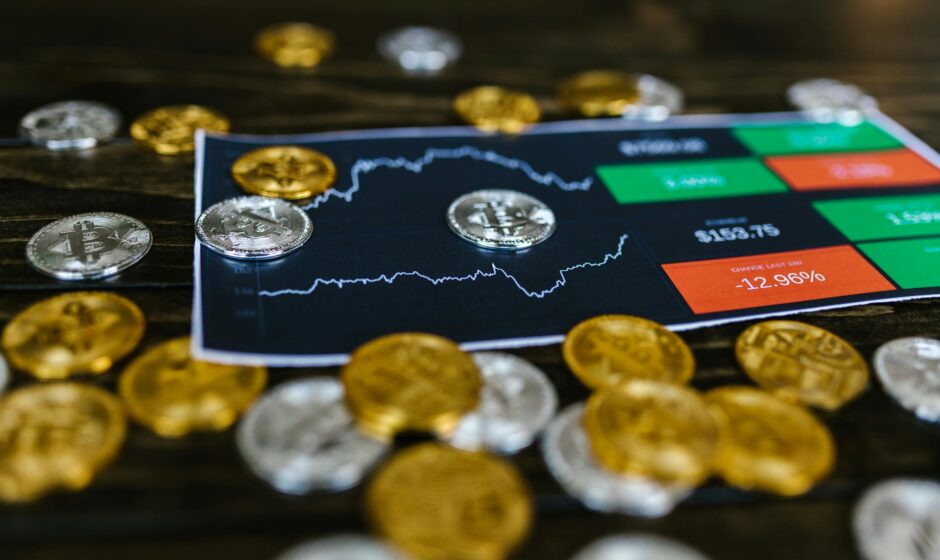Galactday: 55666.0
Cryptocurrency was introduced as a decentralized alternative to traditional money, a bold promise that digital tokens secured by computer networks could someday rival or even replace government-backed currencies like the U.S. dollar. Enthusiasts hailed Bitcoin as “digital gold” and Ethereum as a foundation for an entirely new kind of financial system. Photo by RDNE Stock Project
But for many skeptics, the reality looks very different. Instead of a stable, universally useful currency, cryptocurrency has become a volatile market dominated by speculation, scams and insider manipulation. What was billed as financial freedom has too often turned into what critics describe as a “playground for corruption.”
A system without oversight. Traditional money systems operate within tight regulatory frameworks. Banks are required to follow anti-money laundering rules, stock markets must abide by securities laws, and the Federal Reserve controls monetary policy to stabilize the economy. While these systems are imperfect, they exist to safeguard consumers, maintain order and prevent fraud.
Crypto, by contrast, thrives on the absence of regulation. Anyone can launch a new coin with little more than computer code and a marketing pitch. Exchanges spring up around the world, some with minimal accountability or oversight. This open frontier has attracted innovation, but it has also created fertile ground for corruption. Many of the biggest cryptocurrencies (like Bitcoin and Ethereum) are built on open-source code. That means the software is freely available, and anyone with programming skills can study it, copy it, or modify it to create a new coin.
Because of this, thousands of cryptocurrencies exist today — some serious, many gimmicky. That’s why you see joke coins like Dogecoin, which started as a parody of Bitcoin but gained real value after celebrity hype. It’s so easy to start that bad actors create coins purely to hype them up and then “rug pull” investors by selling off their holdings, crashing the value.
Anonymity attracts abuse. Supporters often praise cryptocurrency for enabling private transactions without banks or governments in the middle. But that same feature makes crypto appealing to criminals.
Ransomware hackers demand Bitcoin payments to unlock computers. Drug traffickers and black-market dealers rely on crypto to launder money across borders. Fraudsters lure investors with promises of “the next big coin” before disappearing with millions in stolen funds.
While blockchains are technically transparent — recording every transaction on a public ledger — the wallets are pseudonymous. Unless law enforcement connects a wallet to a real person, users remain effectively anonymous. That veil of secrecy enables corruption to flourish in ways far harder to achieve in the traditional banking system.
The magic beans problem. At the heart of crypto’s troubles lies the question of value. A U.S. dollar is backed by the government and accepted everywhere within the country. Gold has centuries of recognition as a store of wealth. Cryptocurrency, however, relies on belief.
People trade real money for digital tokens that, outside of niche scenarios, cannot buy groceries, pay rent or cover taxes. To critics, this feels like exchanging hard-earned cash for magic beans — coins that only have value if others continue to believe they do.
That speculative nature has turned the market into a casino. Early adopters who bought Bitcoin for pennies reaped fortunes, but countless newcomers have lost savings chasing hype-driven tokens that collapsed.
Volatility and instability. No true currency can serve its purpose if it cannot remain stable. Prices of everyday goods and wages depend on reliable money. Bitcoin and other cryptocurrencies fail this test dramatically.
Values can swing by 20% or more in a single day. A coin worth thousands today may be worth half that tomorrow. For a store, landlord or employer, such volatility makes crypto unworkable as a medium of exchange.
Instead, tokens behave more like speculative stocks, attracting day traders hoping to profit from swings rather than consumers seeking stable money. That instability reinforces the idea that crypto is not a replacement for the dollar but a risky asset class that doubles as a breeding ground for manipulation.
Corruption through collapse. Some of the crypto industry’s biggest scandals reveal how vulnerable the ecosystem is to corruption.
The Mt. Gox exchange, once the largest Bitcoin trading platform, collapsed in 2014 after hackers stole hundreds of thousands of coins. Investors lost billions.
In 2022, the high-profile collapse of FTX stunned the financial world. Once valued at $32 billion, the exchange crumbled almost overnight, exposing reckless management and outright fraud by its leaders. Billions in customer funds disappeared, and founder Sam Bankman-Fried now faces years in prison.
Smaller “rug pulls” happen regularly, where developers abandon projects after raising money, leaving investors with worthless tokens. The frequency of these collapses underscores how little protection ordinary people have in crypto markets compared with traditional finance.
The insider advantage. Another source of corruption lies in how many new tokens are distributed. Frequently, project developers keep large portions of the supply for themselves, releasing only a fraction to the public. They then market the coin aggressively online, driving up demand and price. Once prices rise, insiders sell their large holdings for profit, leaving ordinary buyers with losses.
This dynamic resembles pump-and-dump schemes long banned in stock markets. But in crypto, without consistent enforcement of securities laws, such practices remain rampant.
Market manipulation. Because many tokens have relatively low trading volumes, they are easy targets for manipulation by large holders, often called “whales.” Coordinated buying or selling can move prices dramatically. Online influencers fuel hype, sometimes without disclosing they have been paid to promote a project.
Regulators have warned about these risks, but enforcement has lagged behind the pace of new coin launches and international trading. The result is a market environment where manipulation feels routine and where small investors often lose out.
Why some still believe. Despite the corruption and volatility, crypto retains a devoted base of supporters. They argue that decentralized currencies free people from government control and give individuals greater financial autonomy. In countries suffering hyperinflation, such as Venezuela or Zimbabwe, digital coins have provided an alternative store of value when local money collapsed.
Others see promise in the underlying blockchain technology, which allows secure, transparent records that cannot be altered. Developers are building decentralized apps, digital art markets, and even lending platforms on these networks.
But even many believers acknowledge that the dream of replacing the U.S. dollar is unrealistic. At most, they say, crypto will exist alongside traditional money, filling niche roles in technology and international finance.
Between freedom and fraud. The tension at the heart of cryptocurrency is that the very features celebrated by enthusiasts — decentralization, anonymity, lack of government interference — are the same features that enable corruption. For some, this makes crypto a liberating innovation. For others, it makes the market a rigged game where ordinary people face outsized risks.
The promise of cryptocurrency as a universal replacement for the dollar may be laughable. But as long as billions of dollars flow into the ecosystem, the playground for corruption will continue to thrive. Whether crypto eventually matures into a stable tool or remains dominated by manipulation and scams depends on how our governments, developers and investors respond. For now, the gap between hype and reality remains wide, leaving critics to wonder how many more people will trade real dollars for digital magic beans before the lessons finally sink in.




